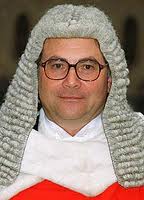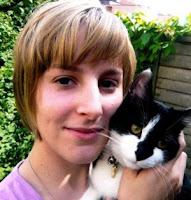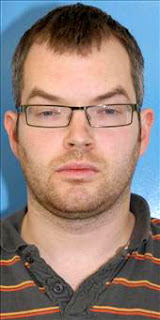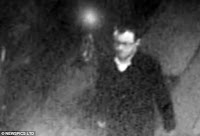“You have been convicted of the murder of Joanna Yeates on sound and substantial evidence. In my view you are very dangerous. In my opinion you are thoroughly deceitful, dishonest and manipulative”
– Mr. Justice Field, 28th October 2011
 |
Mr. Justice Field
– the judge |
After almost 14 hours of deliberation by the jury over three days, Vincent Tabak was found guilty of the murder of
Joanna Yeates by a
10–2 majority verdict. The Judge,
Mr. Justice Field, said that Vincent Tabak, who was flanked by six security guards in the dock, was guilty of an evil and wicked act. The judge told Vincent Tabak, “You have been convicted of the murder of Joanna Yeates on
sound and substantial evidence. In my view you are very dangerous. In my opinion you are thoroughly
deceitful, dishonest and manipulative”. That opinion was delivered after an acquaintance of less than three weeks’ duration under non-ideal conditions – an astonishing description which neither Vincent Tabak’s
family, his
girlfriend, his
colleagues, the
landlord, nor any of the other people who had known him would have recognised. Nor was any of those who knew him called to testify in court to his character. It was theatrical, bizarre and awesome at the same time.
 |
| Joanna Yeates – murdered |
The release date
28th October 2031 published in the records of the cases heard in Bristol Crown Court shows that the 20 year sentence handed down by the judge does not make any allowance for the
nine months Vincent Tabak spent remanded in custody. For that matter, the sentence took no account of the annihilation of the
intellectual property rights embodied in the nine years of the defendant’s
higher education and his Ph.D. Nor did it take account of the enormous
additional burden on himself and his family of his
incarceration in a different EU member state from his own, and the encouragement he had received both from his alma mater, Buro Happold, and the EU itself, to put himself into this vulnerable situation.
 |
Nigel Lickley QC
Counsel for the
Prosecution |
The severity of the punishment meted out for a proportionately serious crime reflects the principle that everyone is capable of anticipating rationally the consequences of their actions, and of distinguishing between right and wrong. This is the
bedrock of criminal justice in a society governed by the rule of law. It follows logically that any prosecutor who accuses a defendant of murder
must demonstrate why the accused intended to kill. Yet
Nigel Lickley QC made no attempt to explain the
motive for the attack for which Vincent Tabak was standing trial. Despite the best efforts of his own QC
William Clegg and the news media to ignore it, neither you nor the jury can be in any doubt that the prior
character of the dependant was so exceptionally good, that the allegation that it was he who killed Joanna was thereby
inexplicable. You cannot escape the only possible conclusion – namely, that some very
unpleasant means were used during his first eight months inside Long Lartin to induce
“the lying Dutchman” to stand in the dock, hour after hour, giving a convincing impersonation of a clumsy killer.
 |
William Clegg QC
Counsel for the Defence |
You do not need to discover
any more about this case than these few basic facts to be forced to face up to the unthinkable – namely, that the legal system, with all its built-in
checks and balances that you were brought up fervently to believe insured against the misuse of power, is also
designed to be circumvented. You
must confront the awful realisation that a huge amount of taxpayer’s money has been sacrificed in order to make a
scapegoat of Vincent Tabak (and drastically to compromise the integrity of
Christopher Jefferies), to
shield the real killer of Joanna Yeates. You cannot escape the conclusion that the entire
British news media has cast all its dignity and the last vestiges of its civilised restraint aside to prevent the world from learning the
truth about this atrocity.
 |
Head of the Complex Casework Unit
at the CPS, Ann Reddrop, outside
Bristol Crown Court after the verdict |
After the verdict, the Head of the
Complex Casework Unit at the CPS in Bristol,
Ann Reddrop, told reporters that the police had asked her for assistance late in
December 2010. Having reviewed the evidence, she said, she advised that Vincent Tabak should be charged with Joanna’s murder. The evidence did indeed suggest that she had been murdered, but none of it pointed to Vincent Tabak. Ann Reddrop did not explain that a Complex Case is one with multiple defendants and multiple victims.
Christopher Jefferies could have been one of the other defendants, and
Melanie Hall one of their other murder victims, but she did not mention them. The Complex Casework Unit’s involvement must be attributable to the unknown killers of Joanna Yeates whom the police dared not prosecute. It was Ann Reddrop’s lot to advise on the scapegoat.
 |
Ann Reddrop, DCI Phil Jones and DI Joseph Goff, at a press conference held after the trial,
probably on 1st November 2011 |
In a press conference following Tabak’s conviction
Detective Inspector Joe Goff, one of the senior detectives in the case, was asked if police visited sex workers Tabak had used. He said: “We never got as far as tracking any of the escorts down. What we had in the USA and other times he was working away was that he would be seeking to make contact with escort girls. That was in his make up. In evidence, we never got as far as contacting any of the girls. We looked at the pattern of internet research, the withdrawal of sums of money from his bank account and telephone contact between him and numbers linked to escort girls.”
DCI Jones added: ”During the investigation we worked closely with Law Enforcement Agencies in the USA establishing Vincent Tabak’s movements during his 5 week stay. The trial judge, Mr Justice Field, ruled as inadmissible the evidence of Vincent Tabak’s contact and links to escorts during this visit. Despite this ruling and having listened to all the admissible evidence in this case, the jury found Vincent Tabak guilty of the murder of Joanna Yeates.”
... Detective Chief Inspector Phil Jones... said: “During the examination of Vincent Tabak’s computer, other material was found. We have referred this matter to the Crown Prosecution Service for initial guidance.”
Ann Reddrop, head of the CPS South West Complex Casework Unit, added: “The CPS has been asked for initial guidance about other material.”
– SWNS, 1st November 2011.
Why hasn’t Vincent Tabak appealed?
 |
| Joanna’s parents Teresa & David Yeates |
According to journalist Jonathan Corke writing in The Daily Star, 30th October
2011: VINCENT Tabak is believed to be plotting an appeal – piling
yet more anguish on Joanna Yeates’ family. He is set to ask his lawyers whether
he can get the courts to review his life sentence or even overturn his murder
conviction. Last night, Joanna’s parents said there would be “no justice” if he
were to secure a lesser punishment. Dad David, 64, said he wants Tabak to
suffer “a living hell” while he serves a minimum 20 years for murdering
landscape architect Joanna. IT worker David said: “At the end of the day he’ll
get out and continue his life. All we wanted was for him to have the tag of
murderer and he’s got that now. We haven’t heard he will appeal.”
 |
| Stitched up, drugged... |
It is not normally possible for an accused person who has stood trial on the basis of a plea of guilty of manslaughter to
appeal against their subsequent conviction for murder – even if the plea itself is unsound and the voluntary vulnerability of the defendant has been abused. Nevertheless, Vincent Tabak’s counsel William Clegg QC did not lodge an appeal. However, if he had a lawyer who was above suspicion of collusion, he might be able to apply for a
judicial review with a view to getting his conviction quashed, or to apply for a
retrial, on any of the grounds we have shown here, e.g., his
illegal interrogation in Holland, repeated
denial of the right to plead, lack of bail,
remand in isolation, repeated failure of
habeas corpus,
character assassination by his own defence, and the suspicion that he was stitched up, drugged, isolated, tricked into making a fake
confession, lied to,
threatened with violence and blackmailed into signing a phoney “enhanced” statement after a plea of manslaughter had been entered on his behalf by an imposter, probably with the added threat that he would never get free nor see his
mother nor his native
Holland again if he didn’t co-operate.
Yet when Vincent Tabak was brought back to Bristol, 2½ years later, to stand trial on a totally implausible charge of having possessed
illegal images of child abuse at the time when he was first arrested, he had not sacked his defence lawyers. On the contrary, he retained the same firm of solicitors and the same barristers’ chambers to represent him. His satisfaction with them can be explained only by deducing that he had undertaken to stand trial for killing Joanna in return for a
secret amnesty and a new identity. This may also account for his absence of emotion on hearing the jury’s verdict.
The Wikilies
 |
| DCI Phil Jones, leader of the murder investigation |
The murder of Joanna Yeates and the life sentence served on Vincent Tabak are recounted in an article on
Wikipedia that gives scarcely a hint of the unsoundness of the verdict. The article is based uncritically on the reporting in the news media. The
news media allowed themselves be manipulated by
Avon & Somerset Constabulary and
LGC Forensics. After the verdict was delivered, the news media abandoned all respect for sound journalism. The only hint of unsoundness in Wikipedia’s article is the statement that
Counsel for the Prosecution in his opening speech did not offer an explanation for the reasoning behind the initial attack on Joanna Yeates. Most people would be astonished by a two-day murder prosecution case that did not once mention
motive – but not Wikipedia. The following lies are found in the article:
 |
| The entrance to Joanna’s flat |
False: Wikipedia reports that
Joanna was killed inside her flat. This proposition was not actually tested in court, because it was the starting point for the trial. No blood nor any DNA from the suspect was found in the flat, yet Joanna
bled a good deal when she was strangled. However, the only evidence supporting it was the presence in the flat of her keys, purse, mobile phone, bags, outdoor clothing etc., and objects out of place testified by
her boyfriend on his return. Her things could have been planted there after she had been killed elsewhere, however, but the nature of the items that were missing, namely the pizza and one sock, makes it most likely that her boyfriend caught her in bed with a lover, a struggle prevented her from finishing dressing, she fled the flat clutching the one sock, and was killed in the car where she took refuge.
 |
| Fire engines in Longwood Lane, 25th December 2010 |
False: Wikipedia reports that
Joanna’s body was found beside
Longwood Lane itself, and includes the co-ordinates of the spot. However, the use of four pumping fire tenders, one of them equipped with a 1.47 tonne crane having a 5 metre reach, a safety boat, and ancillary appliances, working all afternoon to recover the body, proves that the public and the jury were misled, and that the body was actually dumped in a place with significant access difficulties.
 |
| Christopher Jefferies |
False: Wikipedia reports that suspicion of murder was the reason why
Christopher Jefferies was arrested, and also that he was kept on police bail for six weeks after Vincent Tabak had been charged. It omits to mention his 2nd witness statement, volunteering evidence that he was one of the last to see Joanna alive, it omits to mention that this was never heard by the jury and that it has it never been made public in ungarbled form. The unmistakable inference is that silencing the landlord and perverting the course of justice was the police’s real motive for his drastic arrest.
 |
| Dr Jennifer Miller |
False: Wikipedia reports tests allegedly proving that
Joanna had not eaten the
pizza she had purchased on her way home. The unattributed police source claiming this was probably lying, she probably did eat the pizza, and the police probably knew that she had done so. Wikipedia omits to mention that the Scottish gastroenterologist who testified in court, Dr Jennifer Miller, managed to do so without actually revealing whether her analysis of the stomach contents had revealed anything at all.
 |
Vincent Tabak’s girlfriend
Tanja Morson. She had not
left him, nor did she tip off
the police anonymously |
False: Wikipedia reports that Vincent Tabak’s arrest followed a tip from an
anonymous female caller. This is unsubstantiated hearsay that conflicts with the evidence presented in court by the officers who were responsible for investigating and arresting Tabak. None of these mentioned an anonymous tip in their testimony.
 |
Joanna Yeates’s
boyfriend
Greg Reardon |
False: Wikipedia reports that the authorities declined to reveal additional details while the suspect was being interrogated due to concerns over controversial media coverage of
Mr. Jefferies’s arrest, which had breached the rules governing what can be reported when an individual is arrested. This is a lie. The news media were able to work out the identity of the suspect and his
girlfriend within minutes of the announcement of his arrest. The authorities leaked to the tabloid
media a succession of details, mostly false (like the one about the anonymous female caller), while Tabak was being questioned. These included the allegation that Tabak’s girlfriend had left him at the time of the killing – whereas in fact they had been telling friends that they had decided to get married – that Tabak and Joanna had known each other professionally, that Tabak had been happier than normal at work on the day Joanna had last been seen alive, that he had heard from the landlord about the jump-starting of the car and Joanna’s
boyfriend’s absence in Sheffield, that the
DNA found on her breast indicated that Joanna’s killer had tried to assault her sexually, that her body had been transported in a large bag or suit-case, that a video from CCTV had been found showing what was believed to be the killer’s car with Joanna’s body in it crossing the Clifton suspension bridge, and that sounds travelled readily through the partition between the two flats.
 |
Prison chaplain Peter Brotherton.
The jury was not told that he was
actually a Supervising Officer
from Whitemoor Prison |
False: Wikipedia reports that Vincent Tabak told a
prison chaplain at Long Lartin that he had killed Joanna Yeates. This is untrue, nor is it what the chaplain actually testified in court. It was Tabak’s
defence QC who told the court that Tabak had told the chaplain that he had killed Joanna, in such a way as to make the jury think that the witness did not quite remember properly. The so-called chaplain’s answer to the QC was, “If you say so”. The chaplain did not even state that Tabak had confessed to him. It was the
Prosecuting Counsel who told the jury that Tabak had confessed to the chaplain.
 |
| Long Lartin prison |
False: What Tabak actually told the chaplain was that he was thinking of pleading guilty. He also expected the chaplain to be shocked that his lawyer had advised him to plead guilty of manslaughter when the evidence against him was so weak, and, in the case of the DNA, unsound, and when he was also innocent of the crime. That is most probably why he said “I am going to tell you something that will shock you”. The double-act in court between the chaplain and the defence QC was very carefully contrived right from the time before Tabak was sent to
Long Lartin.
 |
Forensic scientist
Lindsay Lennen |
False: Wikipedia reports on the
DNA evidence against Tabak but omits to mention that the expert witness admitted that it was based on samples so minute that they could be transferred by breath or touch. This means that the statistical likelihood of cross-contamination was so great that the evidence is worthless when the suspect and the victim live in the same house and
share the ground with a cat. The article does not mention that the
defence QC cross-examined the expert witness from LGC Forensics as if he himself were a sales rep for her firm. Instead of discrediting her very weak DNA evidence, he reinforced her testimony. She was not even the scientist who actually collected the samples and analysed them.
 |
Fibres found on Joanna’s body
suggested contact with
Vincent Tabak’s coat and car |
False: Wikipedia omits to report that the Defence failed to challenge the
fibre evidence, though it is obvious that fibres are unlikely to be unique nor statistically significant in the way that finger-prints are unique.
False: Wikipedia reports that
Tabak tried to implicate his landlord, but the landlord was never called into court to confirm or refute the incriminating allegations that the police alleged the defendant had made.
 |
The detective sent to Holland
DC Karen Thomas |
The court heard only about a relatively trivial incident relating to the direction in which the landlord’s car was facing. Tabak’s statement was a very substantial one, most of whose full content was never revealed during the trial, nor subsequently, yet the judge added two years to the sentence on the basis of it. He had volunteered this statement, which was taken by a
detective who (unreported by the news media at the time) was sent to Holland for the purpose, just after the police themselves had arrested the landlord, and all the news media were also engaged in contacting the landlord’s ex-pupils and others who knew him in their attempts to obtain incriminating statements from them. Evidence fully in the public domain shows that the police set a trap for the landlord, who thereby unwittingly set a trap for Tabak, yet Wikipedia does not reveal any of this.
 |
Lyndsey Farmery
– said to be a
police IT expert |
False: Wikipedia reports that Vincent Tabak made
internet searches of body decomposition and rubbish collection – as if it were a fact. The article does not mention that the police officer claiming to be an internet-use analyst when testifying in court did not herself testify to any searches. The court saw a succession of actual web sites, and the witness testified only to what the court was seeing in each case. It was the prosecution QC who told the court in each case, “Tabak visited this web site”. If Tabak had actually made these searches, and they had been detected by the witness using analysis, then she would have been quite capable of testifying by herself and unaided, without the double-act with the QC. The only possible conclusion is that she wanted to avoid perjuring herself – and that she had no special computer skills. Of course Tabak made some of these searches – the same non-incriminating searches as 60 million other people. He lived next-door to the victim. But a computer Ph.D like him would never have been so daft as to leave an incriminating trail on his own computers if he had been guilty.
False: Wikipedia states that Tabak had used his computer to research escort agencies during business trips in the United Kingdom and United States, and contacted several
prostitutes by phone. These lies are based on unsubstantiated hearsay from anonymous police sources, and unsubstantiated statements made by Prosecuting Counsel enjoying court immunity.
 |
... women being controlled by
men, bound and gagged,
held by the neck... |
False: Wikipedia states that Tabak viewed
internet pornography. This is likely to be true, since very few people can honestly say they have never viewed adult pornography. However, Wikipedia goes on to repeat detailed descriptions given by Prosecuting Counsel enjoying court immunity of a series of violent internet pornographic videos. As these were specially selected by an anonymous police source (who was not under oath) to include images of a woman who bore a striking resemblance to Joanna Yeates pulling up a pink top to expose her bra and breasts, there is no reason to believe that these videos had ever been anywhere near Tabak’s computers. Wikipedia repeats Counsel’s and the news media’s lie that these might shed light on the need to hold a woman for long enough and the need to squeeze hard enough to take her life.
False: Wikipedia reports that
illegal images of child abuse were found on Tabak’s computers. Not only is this based on unsubstantiated hearsay from an anonymous source, but it is also obviously and self-evidently untrue, and was furthermore intended to incite prison inmates to carry out vigilante attacks on Tabak. The existence of this charge has also been used in the succeeding years to suppress any subsequent press reporting about Vincent Tabak except what is based on the trial proceedings.
The following are not lies, but they show how the
Wikipedia article is seriously misleading:
 |
| The Old Bailey |
Wikipedia fails to report that the
plea hearing was moved at 24 hours notice 100 miles from Bristol to the Old Bailey, without any explanation being given, nor that no one who knew Tabak even slightly was in court at any of the preliminary hearings. The inference is that the reason for the move was to use an actor to enter a manslaughter plea by video-link (instead of a Not Guilty plea that the defendant would have intended) and groom the news media to report the “bad character evidence”.
 |
| A “show” trial |
Wikipedia reports the trial as if it were a normal adversarial trial – whereas the reality is that it was a
“show” trial with a rigged outcome and a
Defence QC who was in league with the prosecution all the way through. Wikipedia omits to mention that the trial judge was exceptionally passive.
 |
| Lord Justice Leveson |
Wikipedia reports extensively on the effect of
press abuse on the landlord, but omits any comparable report of the effect of
press abuse on Tabak and the total failure of Lord Leveson to address it.
 |
| “A man of good character” |
Wikipedia bizarrely fails to report that no independent “good character evidence” was presented by Tabak’s Defence, despite its obvious importance to a defendant who is a European migrant professional of
previously irreproachible character.



























